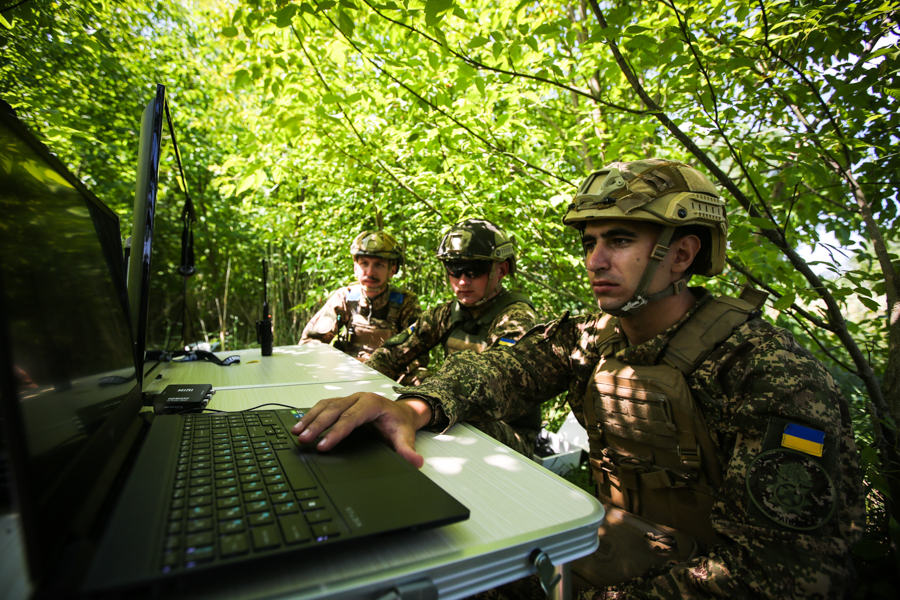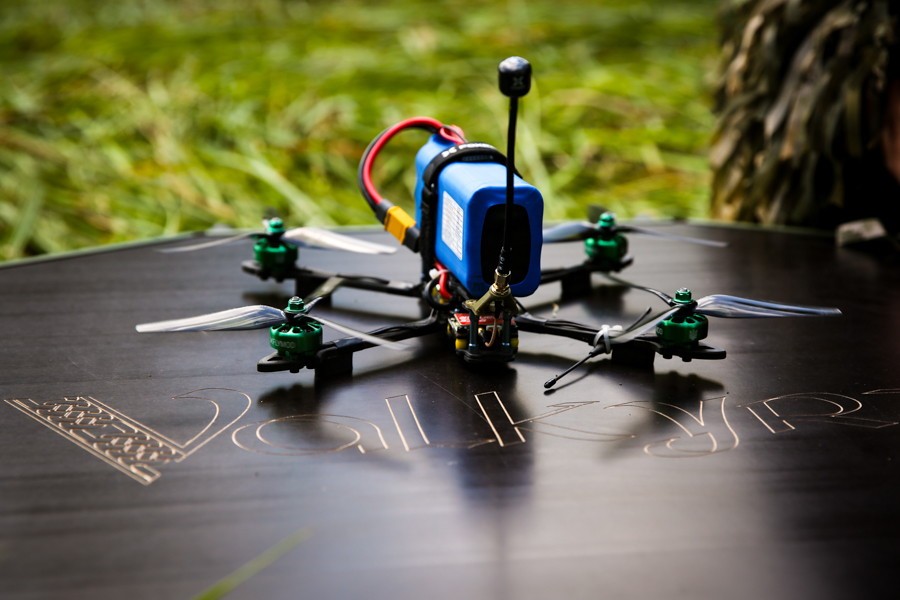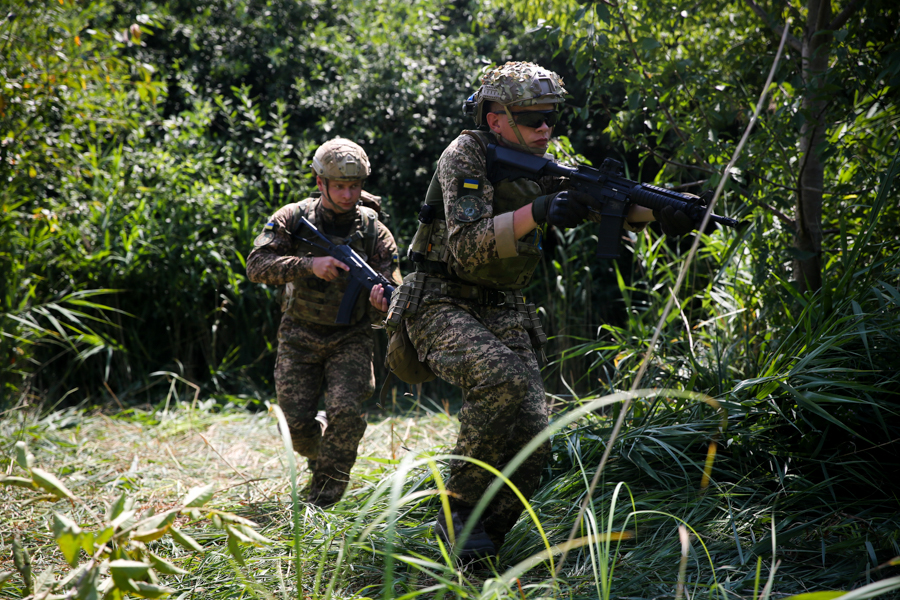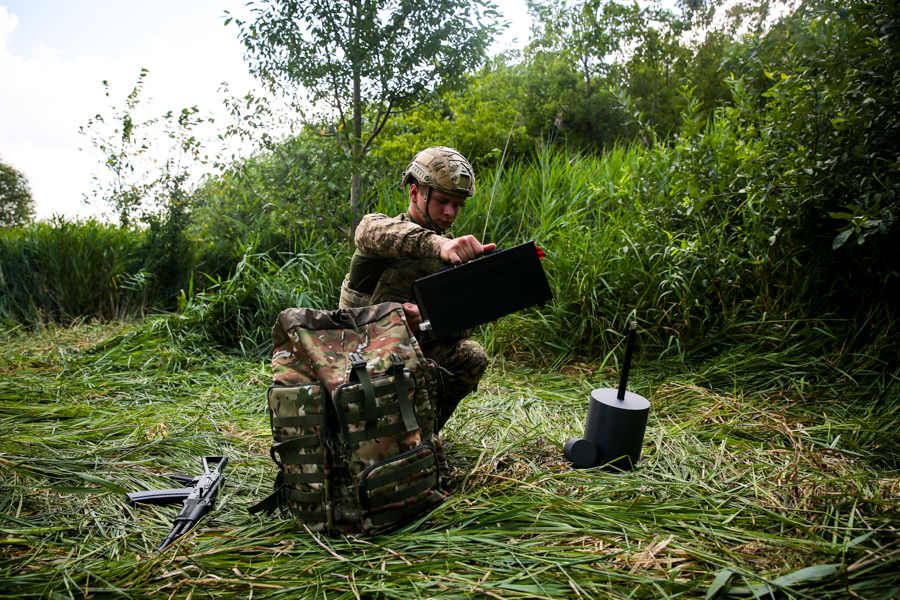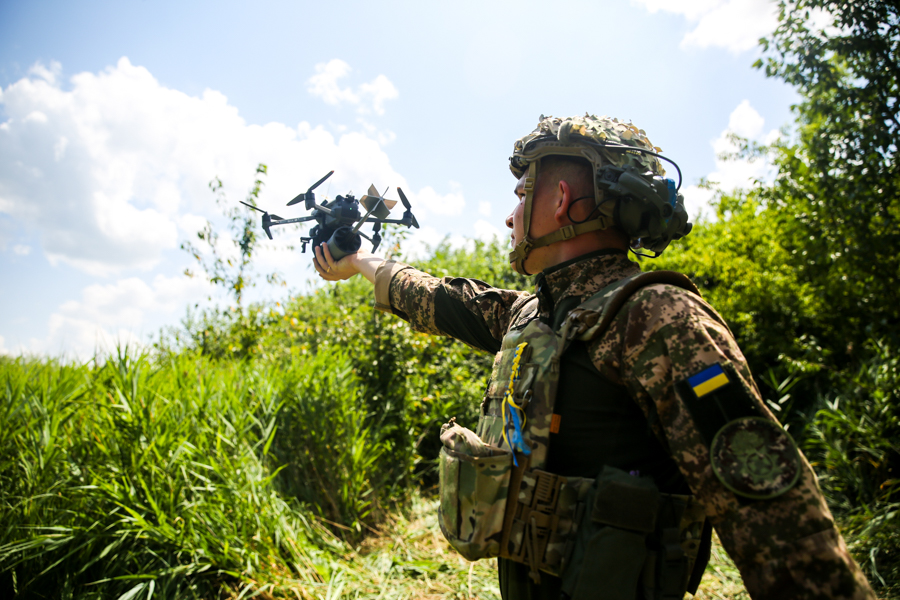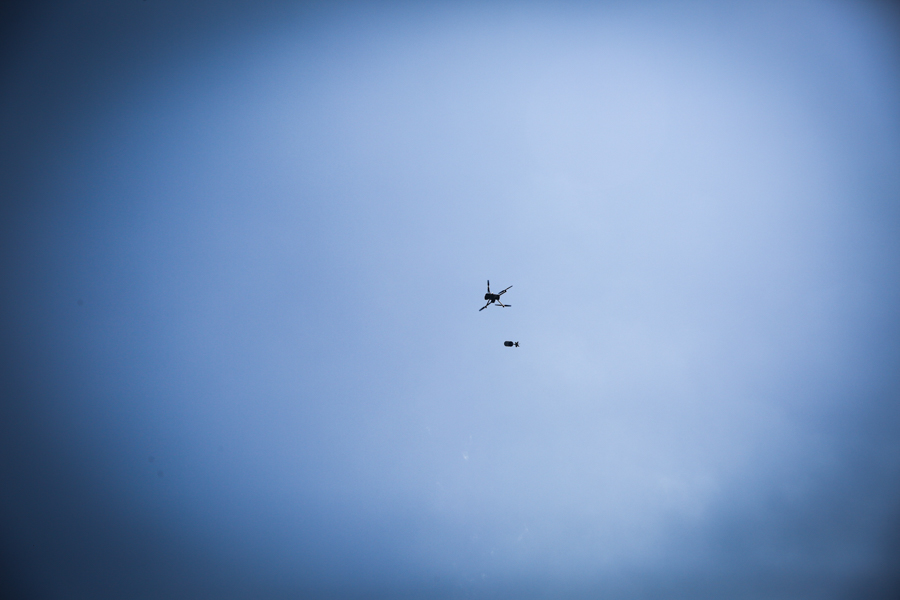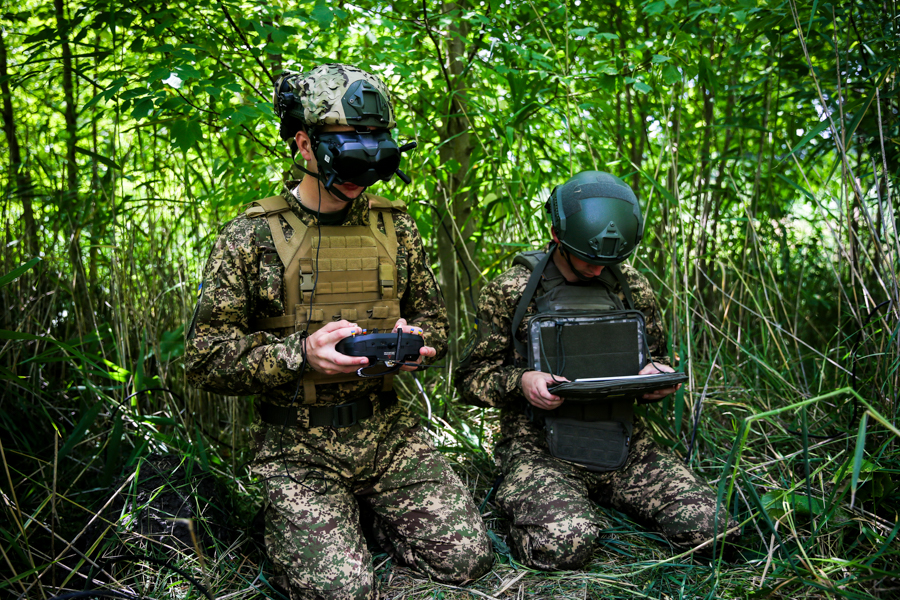"From a pilot's perspective: how cadets of the National Academy of the National Guard of Ukraine learned to control FPV drones"
FPV drones are controlled through goggles or a monitor, creating the illusion of your own flight. Controlling an FPV drone is more difficult than civilian drones, which have many automatic functions. Piloting an FPV drone requires a deeper knowledge of the physics of flight.
A group of cadets from the Command and Staff Faculty completed training at a two-week course for FPV drone pilots as part of the "Army of Drones" project for the comprehensive development of the military unmanned aerial vehicles sector.
The FPV drone control course included a theoretical part, where the guys studied the areas of use of UAVs (unmanned aerial vehicles), the basics of piloting and working under the influence of electronic warfare. The second part was aimed at mastering the initial skills of controlling FPV drones using simulators with the "Obrii" training software. The third part of the course was practical control of FPV drones.
The future officers were trained by lecturers from the Department of Tactics together with instructors from the "AIR SKILLS" Center for Training Unmanned Aerial Vehicle Operators.
One of the UAV control instructors for the group was Oleksandr Maksymchuk a senior soldier at the National Academy of the National Guard of Ukraine. The guard participated in the battles at the "Svitlodar Arc" in 2017 and in the "Kyiv Company" in March 2022, and now Oleksandr is passing on the knowledge gained in the battles to the cadets.
"The guys who take this course are filled with enormous motivation. I really want to help them avoid the mistakes that I once made and pass on all my experience to them. An FPV copter pilot have to be not only skilled, but also smart. They have to have a constant desire to learn new things. My goal is to develop in the direction of unmanned systems and share my knowledge with the military. I believe that UAVs are an integral component for ensuring successful combat operations," – Oleksandr says.
Flying FPV drones is an art of speed and skill. Their high speed and lack of automatic stabilization in the air require exceptional skills from the pilot.
In the practical part of the course, the cadets learned the art of keeping a drone at a given height, which requires accuracy and stability. Also, the guardsmen held the drone at a point in space. This exercise helps to master the ability to stop the drone in place, keeping it in one point despite wind currents and other factors. The guys practiced taking off and landing the drone, practiced flying along complex trajectories, which requires high accuracy and coordination of movements. They learned to identify correctly objects on the ground, both on the ground and in the air, and after identification – to destroy enemy’s targets. They overcame obstacle courses that simulated real conditions during combat missions. They sent the drone over long distances, maintaining control and communication, and setting up video signal transmission in real time.
A separate training issue was working with the crew of a reconnaissance quadcopter. Cooperation with the crew included searching, identifying, transmitting target designations, destroying the designated target, and confirming the destruction using the Starlink satellite communication station.
"Today, FPV drone crews work in tandem with reconnaissance quadcopter crews, forming a harmonious dance of technologies and strategies. The process begins with careful planning of the task: advancing to a position, equipping it and deploying unmanned systems. Each element of the system is checked, video and radio communication is established with the commander or headquarters, such communication is the basis for further actions.
Reconnaissance begins with the search for targets, and if necessary, additional reconnaissance is carried out. The headquarters determines the targets and the order of their destruction. And only then the FPV crew works, equipped with kamikaze drones, enter the scene, which go on their last flight and never return. Their flight is the decisive moment of the operation, the result of which is successful attacks on the enemy, which can be seen every day on social networks”, – Senior Lecturer and Head of the Unmanned Aircraft Systems Service of the Department of Tactics Anton Voronin tells about the peculiarities of the work of the FPV drone crew.
"Controlling a real FPV drone, unlike a simulator, turned out to be not as simple as it might seem at first glance. Practical experience is significantly different from virtual control. The easiest thing for me was to cope with the take-off and landing exercise, which is one of the main ones for piloting. The most difficult thing is to fly in a small square, maintaining one height, without going beyond the perimeter. This exercise requires microcontrol, it was one of the first on the course and was the most difficult for me. But in the end, I coped with all the tasks. After completing the course, I plan to get into the UAV application unit and continue to develop my skills and knowledge, performing combat missions," – a cadet of the Command and Staff Faculty soldier Maksym Pavlichenko says about his training.
At the end of the course, the guardsmen took a test, during which they demonstrated their skills and knowledge acquired during their training. All cadets in the group received a certificate of successful completion of the course.
Department of International Relations, Information and Communication of the NANGU
